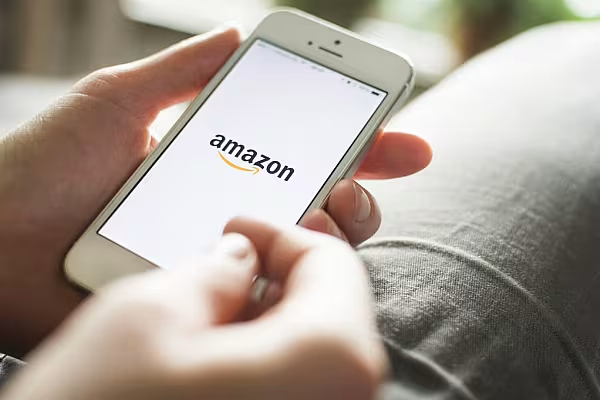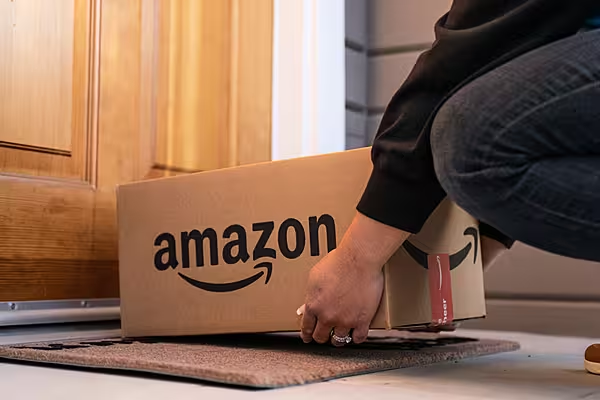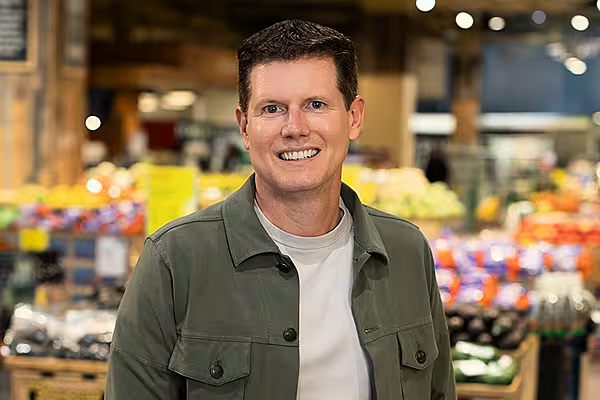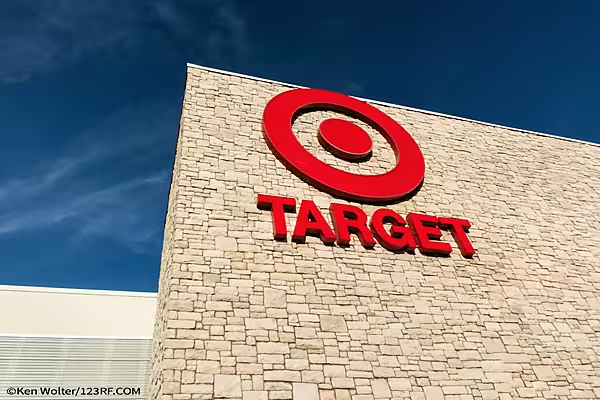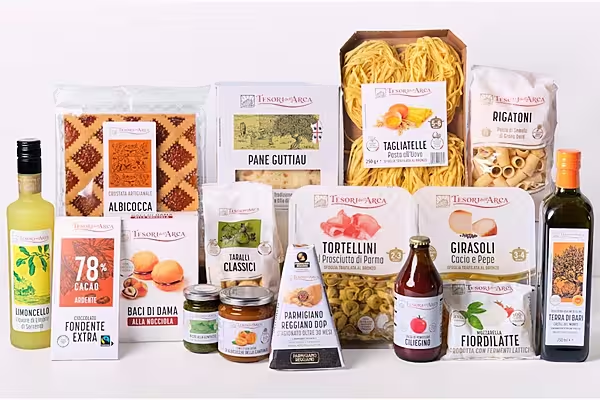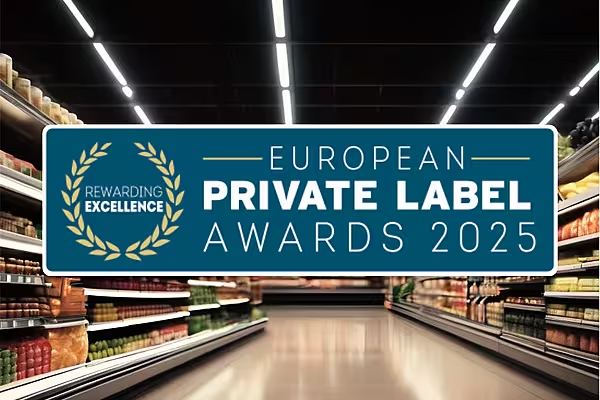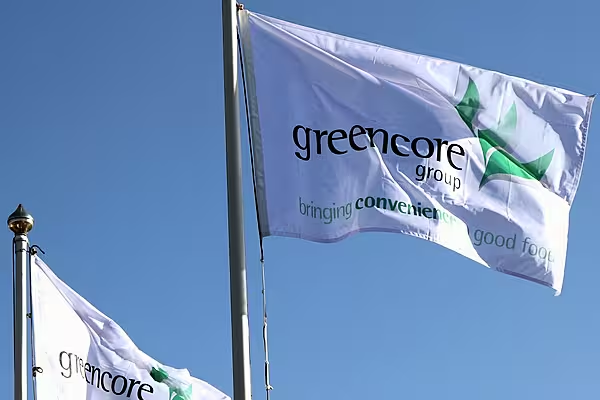A few months ago, Amazon representatives met with fashion designer Jackie Wilson as part of the expansion of Amazon’s surging apparel business.
They wanted her to make a knit top for women that would be sold under an Amazon-owned private label. And they wanted the fabric to feel heavy and high-quality—the sort of attributes long associated in the shopping mind with name-brand attire.
“They are not concerned at all about how many units they sell, and they’re not focused on margins,” says Wilson, whose company in Syracuse, New York, makes clothing for Kohl’s, American Eagle Outfitters, and J.C. Penney Co. “They’re concerned about customer satisfaction. They want five-star reviews.”
Wilson’s knit top is in the vanguard of a private-label push that’s upended the $275 billion US apparel sector.
Amazon, Walmart, Target, and other big retailers are beefing up their clothing lines to grab shoppers whose loyalty to established brands such as Gap and Nike has waned.
Even supermarket chain Kroger is getting in on the act, attracted by profit margins that far exceed what they earn on bananas and paper towels.
Clothing Business
This year Amazon will leapfrog T.J. Maxx and Macy’s to become the second-biggest seller of apparel and footwear in the US, Wells Fargo estimates.
In some categories — like the active wear that Americans increasingly wear all day, whether or not they hit the gym — private labels combined account for 20% of the market, according to researcher NPD.
That makes store brands in aggregate larger than any single brand, which should strike fear in the executive suites of Lululemon Athletica, Nike, and Under Armour.
“Active wear is going like wildfire,” Wilson says, for the simple reason that “you don't have to try on spandex pants. If I was in those categories, I would be worried.”
“Millennials don’t care as much about logos.”
Store-brand apparel is nothing new. The Sears, Roebuck & Co. catalog first offered clothing in 1894, and Walmart’s Faded Glory house brand began life in 1972 as a department-store label. But for years, private-label apparel was dull and dowdy, no match for branded threads.
That started to change in 1990 when British supermarket chain Asda asked fashion designer George Davies to create an exclusive clothing line.
The result, George, was a hit in the UK and caught the attention of Canadian retailer Loblaws, which in 2004 hired Joe Mimran, co-founder of the Club Monaco chain, to do the same.
His Joe Fresh expanded into standalone stores and a partnership with J.C. Penney in the US. But the brand didn’t click with Penney’s shoppers, prompting Mimram’s departure in 2015 and an overhaul of the business.
Increased Investment
Despite its recent struggles, Joe Fresh “was a nice surprise to other retailers who said, ‘Hey, if they can do this, we can, too,’” says Adheer Bahulkar, a partner at consultants A.T. Kearney.
As retailers stepped up investments, connected with Asian suppliers, and poached fashionistas to head up in-house design teams, the established brands stumbled under the weight of declining mall traffic and heaps of unsold inventory. Brand loyalty began to crater.
Under Armour has been battered by slowing growth in athletic footwear, J.Crew has struggled to reinvent itself after the departure of longtime Chief Executive Officer Mickey Drexler, and Gap’s only bright spot lately is its off-price Old Navy chain. Even mighty Nike this year announced its first major layoffs since the financial crisis.
“Every new generation is becoming less and less brand-loyal,” Bahulkar says. “Millennials don’t care as much about logos. They will buy anything from anywhere at any price point, and that is a big change.”
The erosion of brand loyalty has been a boon for Target, the cheap-chic retailer that made its name in apparel via partnerships with top designers Isaac Mizrahi and Jason Wu more than a decade ago.
It’s leveraged that success to create its own private labels in recent years, most notably Cat & Jack, a kids’ apparel line whose sales surpassed $2 billion after a little more than a year on the shelves.
Target’s winning formula has emboldened Walmart, which recently hired a veteran of Saks Fifth Avenue and Ralph Lauren to boost its fashion game.
Online Shopping
Apparel shopping these days often begins with an online search, and research from consultants Bain & Co. finds that a surprising number of those queries don’t mention a brand at all — consumers just enter “yoga pants” and see what comes up.
Searching for generic product categories on Amazon turns up plenty of private-label options. More than one-quarter of first-page Amazon search results in categories such as men’s button-down shirts were private labels, Bain says.
That helps explain why almost 40 cents of every dollar spent online on clothing and footwear in the US will go to Amazon this year, according to data tracker Euromonitor, up from 23 cents in 2014.
Amazon is capitalizing on this in two ways. First, despite its private-label push, it’s simultaneously trying to create legitimacy as a destination for fashion by luring established brands that want to improve their digital sales, even if it means submitting to Amazon’s pricing algorithms.
Heads turned when Nike began selling its shoes directly on the site over the summer. And Calvin Klein recently opened two pop-up shops in New York and Los Angeles whose fitting rooms are outfitted with an Echo Look, an Amazon device that lets users submit photos of outfits and recommends the best one. There’s also a dedicated Calvin Klein storefront on Amazon.com with exclusive items.
Not every fashion brand is as willing to hop into bed with Amazon, fearing a loss of cachet. But with mall-based department stores falling out of favor, analysts at Goldman Sachs say they expect the “vast majority” of labels to follow that path and deepen their relationship with Jeff Bezos.
Expanded Range
Simultaneously, Amazon has introduced a bevy of private labels with names such as Peak Velocity in categories that include shirts and sportswear, where fit and function — plus the convenience of free shipping — are often more important than the latest fashions.
One example is plus-size for women, where Amazon increased its market share about 50% over the past three years, Bain says.
Plus-size is “radically underserved,” Bain partner Tamar Dor-Ner says. “The thing that made it even more attractive for Amazon is it’s a shopper who traditionally doesn’t want to go into the store.”
Luckily for the big brands, three-fourths of apparel shoppers still prefer to feel or try on the product before buying, A.T. Kearney says.
The likes of Lululemon can counterattack with so-called curated merchandising, industry jargon for showing shoppers that this top goes well with those pants. Despite experiments such as the Echo Look, the online giant is not there yet.
“I don’t know anyone who is jumping up and down about buying clothes on Amazon,” says Candace Corlett, president of WSL Strategic Retail. “They’ve put together a lot of midpriced, uninteresting stuff.”
But private labels don’t need to inspire. Like Jackie Wilson’s knit top, they just need to satisfy a need.
“We don’t expect private labels to become fashion houses, but they can create enough newness that they can capture sales,” A.T. Kearney’s Bahulkar says. “Competing with Amazon is a losing proposition.”
News by Bloomberg, edited by ESM. Click subscribe to sign up to ESM: The European Supermarket Magazine.
